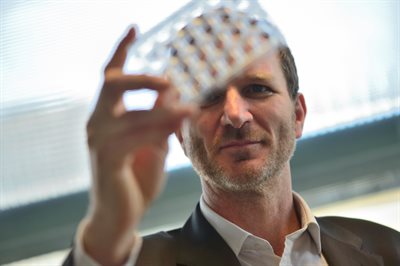
Human trials of novel bacteria resistant materials identified by scientists at the University of Nottingham have been given the go-ahead, marking another milestone in the successful progression of a high-throughput screening (HTS) approach to advanced materials discovery.
The bacteria resistant materials were first discovered in 2012 by scientists in the Schools of Pharmacy and Life Sciences at the University of Nottingham. The team employed and optimised a HTS approach to analyse hundreds to thousands of candidate materials simultaneously for desirable characteristics. This involved being able to produce a HTS substrate (printed microarray) and perform the relevant assays (bacterial adhesion etc.) 'in-situ'. In so doing they were able to identify 'hit' candidates for next generation biomaterials used in medical devices that showed substantial 'in-vitro' capability to prevent bacterial attachment. Progression of this work then led to successful 'in-vivo' animal studies and the aim was that if such material performance could be translated to the clinic it could potentially stop the development of medical device-associated infections. The recent award of a CE mark to urinary catheters developed by Cambridgeshire medical device company Camstent, based on these materials identified by the Nottingham team is the preface to clinical trials that will take place in six hospitals across the UK.
Morgan Alexander, Professor of Biomedical Surfaces and Director of the Interface and Surface Analysis Centre (ISAC) led the team funded by a Wellcome Trust Translation Award that made the initial discovery and said: "This has gone all the way from the discovery of a new class of materials that no one could have predicted to clinical trials and that’s a massive achievement.
"This is only the second medical product to ever come out of this type of high throughput materials discovery that I am aware of and although the new CE mark is for urinary catheters only we have had a lot of interest from companies who manufacture other medical devices. This is an exciting time."
Paul Williams, part of the successful Nottingham team that developed the material lead and Professor of Molecular Microbiology in the School of Life Sciences said: “In the context of antimicrobial resistance these materials could be a major breakthrough. Millions of urinary catheters are used every day around the world and anybody who has a catheter for longer than a week is likely to get an infection.”
More information on this exiting project can be found here.
Posted on Wednesday 18th April 2018